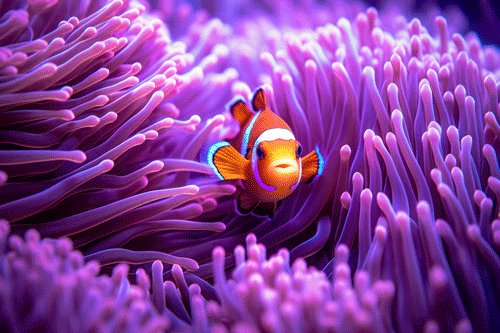Product added to cart


Providing a healthy environment for your aquatic friends is crucial for their well-being. One aspect of maintaining a fish tank involves using the right type of water. Reverse osmosis (RO) water is a popular choice among fish tank enthusiasts due to its purity and ability to remove impurities. In this blog post, we will explore the benefits and considerations of using RO water for your fish tank. Let's dive in!
Reverse osmosis is a water purification process that removes contaminants, particles, and impurities by applying pressure to force water molecules through a semipermeable membrane. This filtration method effectively removes harmful substances such as chlorine, heavy metals, nitrates, and phosphates, resulting in clean and pure water.
2.1. Purity and Consistency: RO water is free from harmful substances, making it an ideal choice for maintaining optimal water conditions in your fish tank. It offers a consistent quality of water, ensuring a stable and healthy environment for your fish.
2.2. Control over Water Parameters: RO water lacks minerals and dissolved solids, which allows aquarium owners to have better control over the water parameters. By adding specific minerals and substances, you can create a customized environment that suits the needs of your fish species.
2.3. Reduced Algae Growth: RO water has fewer dissolved nutrients that contribute to algae growth. By using RO water, you can minimize the occurrence of unwanted algae blooms, ensuring clearer water and a healthier ecosystem for your fish.
3.1. Mineral Content: While RO water is purified and devoid of minerals, it's essential to note that fish require some minerals for their overall health and well-being. To ensure a balanced environment, you may need to add trace elements and essential minerals through supplements or remineralizers specifically designed for aquarium use.
3.2. pH Stability: RO water has a neutral pH, which may not be suitable for all fish species. Some fish species require specific pH levels for optimal health. Before using RO water, consider the pH requirements of your fish and make necessary adjustments to maintain a suitable pH range.
3.3. Gradual Introduction: If you decide to switch from tap water to RO water, it's important to transition gradually. Abrupt changes in water parameters can cause stress to your fish. Start by mixing small amounts of RO water with your existing water source and gradually increase the ratio over time, allowing your fish to acclimate to the new conditions.
4.1. Proper Filtration: Alongside using RO water, it's crucial to have a reliable filtration system in place. This ensures that any remaining impurities or particles are efficiently removed, promoting clean and healthy water conditions.
4.2. Regular Water Testing: Regularly test the water parameters, including pH, ammonia, nitrite, nitrate, and mineral levels, to monitor the overall health of your fish tank. This will help you identify any imbalances or potential issues and take appropriate corrective measures.
4.3. Consult with Experts: If you're uncertain about using RO water or need specific guidance regarding your fish species, consult with aquatic experts, local fish stores, or online fishkeeping communities. Their expertise and experience can provide valuable insights and recommendations.
Conclusion
Using RO water for your fish tank can offer numerous advantages in terms of purity, control over water parameters, and reduced algae growth. However, it's important to consider the specific requirements of your fish species and make necessary adjustments to maintain a healthy environment. With proper planning, regular monitoring, and expert guidance, you can provide your aquatic friends with a clean and thriving habitat they deserve.